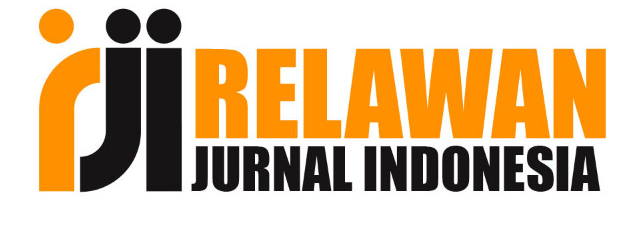Prediksi Data Time Series Harga Penutupan Saham Menggunakan Model Box Jenkins ARIMA
DOI:
https://doi.org/10.36982/jiig.v12i2.1940Abstract
The ability to predict time series data on closing market prices is critical in determining a company's stock results. The development of an efficient stock market has a positive correlation with economic growth, in a country both in the short and long term. In practice, investors tend to invest in countries that have a stable economy, low crime. The rise and fall of stock prices has made many investors develop various effective strategies in predicting stock prices in the future with the aim of making investment decisions so that investors can guarantee their profits and minimize risk.
As a result, the researchers developed a model that could accurately estimate precision. Time series data models are one of the most powerful methods to render assumptions in decisions containing uncertainty. The AutoRegressive Integrated Moving Average (ARIMA) model with the Box Jenskins time series procedure is one of the most commonly used prediction models for time series results. The steps for using the Box Jenskins ARIMA model for historical details of expected stock closing prices are outlined in this paper. BBYB and YELO stock data from yahoo.finance were used as historical data. The Aikake Information Criterion (AIC), Bayesian Information Criterion (BIC) / Schawrz Bayesia Criterion (SBC), Log Probability, and Root Mean Square Error (RMSE) are used to choose an effective model, and the model chosen is ARIMA (1 , 1,2). The findings suggest that the Jenkins ARIMA box model has a lot of scope for short-term forecasting, which may help investors make better decisions.
Â
Keywords: prediction, the stock's current closing price, Box Jenskins ARIMA model
References
Agrawal, R. et al. (2020) ‘Forecasting Dengue Incidence Rate in Tamil Nadu Using ARIMA Time Series Model’, Machine Learning for Healthcare, pp. 187–202. doi: 10.1201/9780429330131-13.
Dong, Y., Li, S. and Gong, X. (2017) ‘Time Series Analysis: An application of ARIMA model in stock price forecasting’, 29(Iemss), pp. 703–710. doi: 10.2991/iemss-17.2017.140.
Fattah, J. et al. (2018) ‘Forecasting of demand using ARIMA model’, International Journal of Engineering Business Management, 10, pp. 1–9. doi: 10.1177/1847979018808673.
Garima Jain, E. and Mallick, B. (2017) ‘A Study of Time Series Models ARIMA and ETS’, International Journal of Modern Education and Computer Science, 9(4), pp. 57–63. doi: 10.5815/ijmecs.2017.04.07.
Hiransha, M. et al. (2018) ‘NSE Stock Market Prediction Using Deep-Learning Models’, Procedia Computer Science, 132(Iccids), pp. 1351–1362. doi: 10.1016/j.procs.2018.05.050.
Hyndman, R. J. and Khandakar, Y. (2008) ‘Automatic time series forecasting: The forecast package for R’, Journal of Statistical Software, 27(3), pp. 1–22. doi: 10.18637/jss.v027.i03.
Khan, K. et al. (2020) ‘The impact of COVID-19 pandemic on stock markets: An empirical analysis of world major stock indices’, Journal of Asian Finance, Economics and Business, 7(7), pp. 463–474. doi: 10.13106/jafeb.2020.vol7.no7.463.
Khashei, M. and Hajirahimi, Z. (2019) ‘A comparative study of series arima/mlp hybrid models for stock price forecasting’, Communications in Statistics: Simulation and Computation, 48(9), pp. 2625–2640. doi: 10.1080/03610918.2018.1458138.
Li, C., Yang, B. and Li, M. (2017) ‘Forecasting analysis of Shanghai stock Index based on ARIMA model’, MATEC Web of Conferences, 100, pp. 1–6. doi: 10.1051/matecconf/201710002029.
Masoud, N. M. H. (2013) ‘The impact of stock market performance upon economic growth’, International Journal of Economics and Financial Issues, 3(4), pp. 788–798.
Murat, M. et al. (2018) ‘Forecasting daily meteorological time series using ARIMA and regression models’, International Agrophysics, 32(2), pp. 253–264. doi: 10.1515/intag-2017-0007.
Pang, X. et al. (2020) ‘An innovative neural network approach for stock market prediction’, Journal of Supercomputing, 76(3), pp. 2098–2118. doi: 10.1007/s11227-017-2228-y.
Personal, M. and Archive, R. (2008) ‘Munich Personal RePEc Archive Forecasting irish inflation using ARIMA models’, (11359), pp. 0–8.
Saraswati, H. (2020) ‘Dampak Pandemi Covid-19 Terhadap Pasar Modal Di Indonesia’:, Al-Kharaj : Jurnal Ekonomi, Keuangan & Bisnis Syariah, 2(2), pp. 109–138. doi: 10.47467/alkharaj.v2i4.112.
Siami-Namini, S., Tavakoli, N. and Siami Namin, A. (2019) ‘A Comparison of ARIMA and LSTM in Forecasting Time Series’, Proceedings - 17th IEEE International Conference on Machine Learning and Applications, ICMLA 2018, pp. 1394–1401. doi: 10.1109/ICMLA.2018.00227. 10.1109/ICMLA.2018.00227.
Applications, ICMLA 2018, pp. 1394–1401. doi: 10.1109/ICMLA.2018.00227.
Spyros Makridakis, Steven C. Wheelwright, V. E. M. (1999) Metode dan Aplikasi Peramalan. Jakarta: Erlangga.
Utami, M. and Rahayu, M. (2003) ‘15639-15637-1-Pb’, Peranan Profitabilitas, Suku Bunga, Inflasi dan Nilai Tukar Dalam Mempengaruhi Pasar Modal Indonesia Selama Krisis Ekonomi, 5(2), pp. 123–131.
Wadi, S. AL, Almasarweh, M. and Alsaraireh, A. A. (2018) ‘Predicting Closed Price Time Series Data Using ARIMA Model’, Modern Applied Science, 12(11), p. 181. doi: 10.5539/mas.v12n11p181.
Pang, X. et al. (2020) ‘An innovative neural network approach for stock market prediction’, Journal of Supercomputing, 76(3), pp. 2098–2118. doi: 10.1007/s11227-017-2228-y.
Personal, M. and Archive, R. (2008) ‘Munich Personal RePEc Archive Forecasting irish inflation using ARIMA models’, (11359), pp. 0–8.
Saraswati, H. (2020) ‘Dampak Pandemi Covid-19 Terhadap Pasar Modal Di Indonesia’:, Al-Kharaj : Jurnal Ekonomi, Keuangan & Bisnis Syariah, 2(2), pp. 109–138. doi: 10.47467/alkharaj.v2i4.112.
Siami-Namini, S., Tavakoli, N. and Siami Namin, A. (2019) ‘A Comparison of ARIMA and LSTM in Forecasting Time Series’, Proceedings - 17th IEEE International Conference on Machine Learning and Applications, ICMLA 2018, pp. 1394–1401. doi: Agrawal, R. et al. (2020) ‘Forecasting Dengue Incidence Rate in Tamil Nadu Using ARIMA Time Series Model’, Machine Learning for Healthcare, pp. 187–202. doi: 10.1201/9780429330131-13.
Dong, Y., Li, S. and Gong, X. (2017) ‘Time Series Analysis: An application of ARIMA model in stock price forecasting’, 29(Iemss), pp. 703–710. doi: 10.2991/iemss-17.2017.140.
Fattah, J. et al. (2018) ‘Forecasting of demand using ARIMA model’, International Journal of Engineering Business Management, 10, pp. 1–9. doi: 10.1177/1847979018808673.
Garima Jain, E. and Mallick, B. (2017) ‘A Study of Time Series Models ARIMA and ETS’, International Journal of Modern Education and Computer Science, 9(4), pp. 57–63. doi: 10.5815/ijmecs.2017.04.07.
Hiransha, M. et al. (2018) ‘NSE Stock Market Prediction Using Deep-Learning Models’, Procedia Computer Science, 132(Iccids), pp. 1351–1362. doi: 10.1016/j.procs.2018.05.050.
Hyndman, R. J. and Khandakar, Y. (2008) ‘Automatic time series forecasting: The forecast package for R’, Journal of Statistical Software, 27(3), pp. 1–22. doi: 10.18637/jss.v027.i03.
Khan, K. et al. (2020) ‘The impact of COVID-19 pandemic on stock markets: An empirical analysis of world major stock indices’, Journal of Asian Finance, Economics and Business, 7(7), pp. 463–474. doi: 10.13106/jafeb.2020.vol7.no7.463.
Khashei, M. and Hajirahimi, Z. (2019) ‘A comparative study of series arima/mlp hybrid models for stock price forecasting’, Communications in Statistics: Simulation and Computation, 48(9), pp. 2625–2640. doi: 10.1080/03610918.2018.1458138.
Li, C., Yang, B. and Li, M. (2017) ‘Forecasting analysis of Shanghai stock Index based on ARIMA model’, MATEC Web of Conferences, 100, pp. 1–6. doi: 10.1051/matecconf/201710002029.
Masoud, N. M. H. (2013) ‘The impact of stock market performance upon economic growth’, International Journal of Economics and Financial Issues, 3(4), pp. 788–798.
Murat, M. et al. (2018) ‘Forecasting daily meteorological time series using ARIMA and regression models’, International Agrophysics, 32(2), pp. 253–264. doi: 10.1515/intag-2017-0007.
Pang, X. et al. (2020) ‘An innovative neural network approach for stock market prediction’, Journal of Supercomputing, 76(3), pp. 2098–2118. doi: 10.1007/s11227-017-2228-y.
Personal, M. and Archive, R. (2008) ‘Munich Personal RePEc Archive Forecasting irish inflation using ARIMA models’, (11359), pp. 0–8.
Saraswati, H. (2020) ‘Dampak Pandemi Covid-19 Terhadap Pasar Modal Di Indonesia’:, Al-Kharaj : Jurnal Ekonomi, Keuangan & Bisnis Syariah, 2(2), pp. 109–138. doi: 10.47467/alkharaj.v2i4.112.
Siami-Namini, S., Tavakoli, N. and Siami Namin, A. (2019) ‘A Comparison of ARIMA and LSTM in Forecasting Time Series’, Proceedings - 17th IEEE International Conference on Machine Learning and Applications, ICMLA 2018, pp. 1394–1401. doi: 10.1109/ICMLA.2018.00227. 10.1109/ICMLA.2018.00227.
Applications, ICMLA 2018, pp. 1394–1401. doi: 10.1109/ICMLA.2018.00227.
Spyros Makridakis, Steven C. Wheelwright, V. E. M. (1999) Metode dan Aplikasi Peramalan. Jakarta: Erlangga.
Utami, M. and Rahayu, M. (2003) ‘15639-15637-1-Pb’, Peranan Profitabilitas, Suku Bunga, Inflasi dan Nilai Tukar Dalam Mempengaruhi Pasar Modal Indonesia Selama Krisis Ekonomi, 5(2), pp. 123–131.
Wadi, S. AL, Almasarweh, M. and Alsaraireh, A. A. (2018) ‘Predicting Closed Price Time Series Data Using ARIMA Model’, Modern Applied Science, 12(11), p. 181. doi: 10.5539/mas.v12n11p181.
Downloads
Published
How to Cite
Issue
Section
License

This work is licensed under a Creative Commons Attribution-ShareAlike 4.0 International License.











